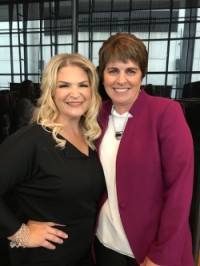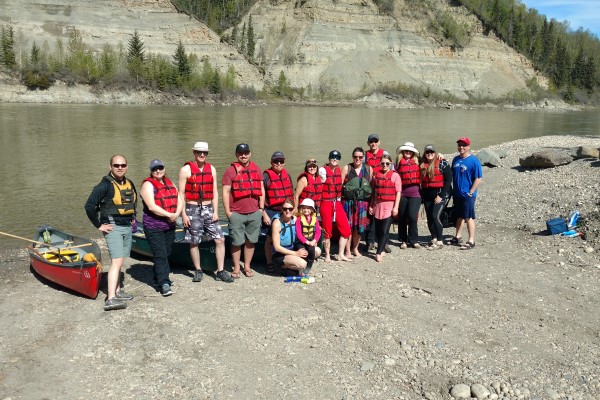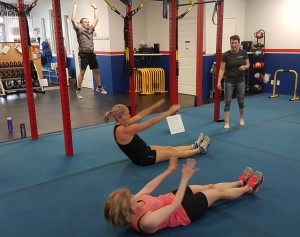Resilient Schools Put Educators First
February 01, 2019
When it comes to serving students who struggle, a network of schools in Alberta is attending as well to staff well-being

In the Wild Rose School Division, our goal is student wellness, but our strategy is staff wellness. This philosophy grew out of our shared experiences dealing with trauma and maintaining healthy conditions.
After the deaths in 2015 of three sisters in a small farming community in rural Alberta, Canada, the two of us — a school wellness director and a psychologist — could see teachers and other staff were struggling to cope with the tragedy. We started discussing how to do better for those affected in times of crisis.
Every school had a crisis plan for teachers to deal with life’s difficulties. But the sisters’ deaths were followed by a series of tragedies in the same school community within a short time. A school-based wellness team, which was caring for the staff and the community, suffered compassion fatigue and needed relief, too.
The answer came when Wild Rose, a school district with 4,700 students in a rural part of central Alberta, worked with a neighboring school district that provided temporary staff to offer some human support. This act highlighted for us the importance of creating a network of individuals to support adults. School staff could reach out to a neighboring school for help, particularly when crises happened in their midst.
No matter how “good” we are at dealing with this tragedy stuff, we often cannot stay present when it is our own community that is hurting.
Serving Staff
Harvard professor Cornel West, a social critic and political activist, provided a guiding light for our work. He states prominently in his book Hope on a Tightrope: Words and Wisdom: “You can’t lead the people if you don’t love the people. You can’t save the people if you don’t serve the people.”
This, basically, is what we believe to be true: Put the people whom you lead first, and you will have dedicated followers who will be able to manage challenging situations. Lead your staff so they are better able to serve your students. Students stand a chance when your staff are OK.
Our work in Wild Rose planted the seed for a model of mental health support called the Carrington Connections Network for Educators. Over the past three years, we have worked with our schools to implement the model, which creates the infrastructure that supports staff first.
Relationships with staff matter more than any program we can invest in when it comes to mental health. A support network should foster face-to-face connections to create bonds that unite and support. The organization’s top leadership must sustain the initiatives, but leadership and connections know no hierarchy. Regular committee meetings of district and school wellness teams, wellness activities and professional development on trauma sensitivity and wellness strengthen the connections.
In Canada, educators are creating “villages of support” where people build relationships within schools and across the district. Structures vary a bit by district. In Wild Rose, all staff participating in professional training focused on a common understanding of four things: relationships, trauma, grief and compassion fatigue. Attendees take away the notions that (a) relationships are critical to mental health and (b) traumatic experiences can greatly impact learning and teaching.
Childhood Conditions

What is different about school-age children these days?
More kids today report high levels of anxiety, stress, depression and disengagement from school, despite many programs to support them. Poverty is prevalent. These children are more vulnerable during stressful times, which can tax the coping abilities of even the most capable and hardy staff.
Teachers could cope when it was one child per classroom. But students who struggle need extra understanding and attention, and a teacher with a classroom where multiple students are struggling will not be able to help all kids. So more kids’ emotional needs are not being met.
Struggling children’s heightened needs for connection require more of a “village” approach. If a child is facing the death of a loved one or grieving, others can help because these experiences are universal. Your principals, teachers, paraprofessionals, bus drivers, librarians and custodians will all be able to understand the pain of a child who is struggling with these emotions and do so with empathy and kindness.
But we can only do those hard things most effectively when we tap into our connections for support and expertise.
Staff Wellness
Helping teachers cope with the stresses of the job goes beyond dealing with students who are traumatized. A proactive approach to wellness energizes staff and helps them build connections with colleagues.
Three years ago, Wild Rose ramped up a wellness program for staff. We scheduled an annual staff wellness day as a way to say, “You matter. We need you to take time to look after yourselves and we need you to do a better job in making sure you’re OK.”
Activities have included canoeing, orienteering, hiking, jazzercise, stand-up paddleboarding and “kangoo,” which involves jumping around with springs on one’s shoes like a kangaroo. Other popular sessions included massage, aromatherapy, singing, playing music, knitting and gardening. Local physicians, chiropractors, psychologists, fitness instructors, dietitians and others volunteered to lead sessions, and the district provided lunch.
To monitor wellness, we have surveys staff can self-administer to measure compassion fatigue and wellness, as well as a districtwide survey that we use to capture staff experiences from year to year.
To encourage staff to take time for themselves, we’ve implemented a Weekdays Til 6 campaign — suggesting no e-mails after 6 p.m. weekdays and none on weekends.

Building Infrastructure
Schools and districts that want to set up their own wellness efforts for staff can follow the lead of our work in the Wild Rose School Division.
We implemented a wellness spending account that gave each staff member up to $700 to buy gym memberships, running shoes and fitness equipment, which is above and beyond our national health care coverage in Canada. We also created a district wellness team consisting of school board members, administrators, educational assistants, wellness workers, teachers and administrative assistants who are responsible for driving more of the wellness initiatives.
To ensure clinical expertise guided the well-being of students and staff, we established a clinical wellness team. Membership was comprised of clinical team leaders and super-visors, counselors, coaches and therapists who work directly with the children and the family. The team provides a guiding force as districts move forward via the Carrington Connections Network Model. We believe that if mental health is a major priority, establishing clarity and creating an expertise within the clinical team of each school district is essential.
In our work with districts that are networked, we’ve developed an ever-ready infrastructure of individuals who understand trauma and relationships. These individuals can act as the conduit to share the “stories” of the most-challenging students with those who need to hear them the most — the adults who are caring for them and are responsible for carrying out the child’s treatment plan.
The shared experience of hearing a child’s story leads to connections among various parties, who respond by serving the children in a much more empathic and comprehensive way. The connections also ease the burden of one or two staff members being responsible for the most challenging cases, thus increasing staff efficacy across the board.
Human Connections
Finally, these school districts now can tap into a network in times of need. It is far too common that significant tragedy will arise. We know when the unthinkable happens, such as three sweet sisters dying in a farming accident, a school shooting or a horrific bus accident, even the best educators forget everything they know to be true when it’s their own staff or students who are affected.
Having access to human resources in other district schools or regionally within your state or province whom you can trust to have been trained to the same standard and with the same language as your staff becomes invaluable when they can step in and assist you in walking through difficult times with your students and staff.
We are creating a shift in culture to one of connection for staff. No longer should we say, “Children first,” without adding, “staff, too.”
About the Authors
Darlene Ferris is director of wellness in the Wild Rose School Division in Rocky Mountain House, Alberta, Canada.
Darlene Ferris
@DarleneMFerris.
Jody Carrington is a clinical psychologist in Olds, Alberta.
Advertisement
Advertisement
Advertisement
Advertisement


